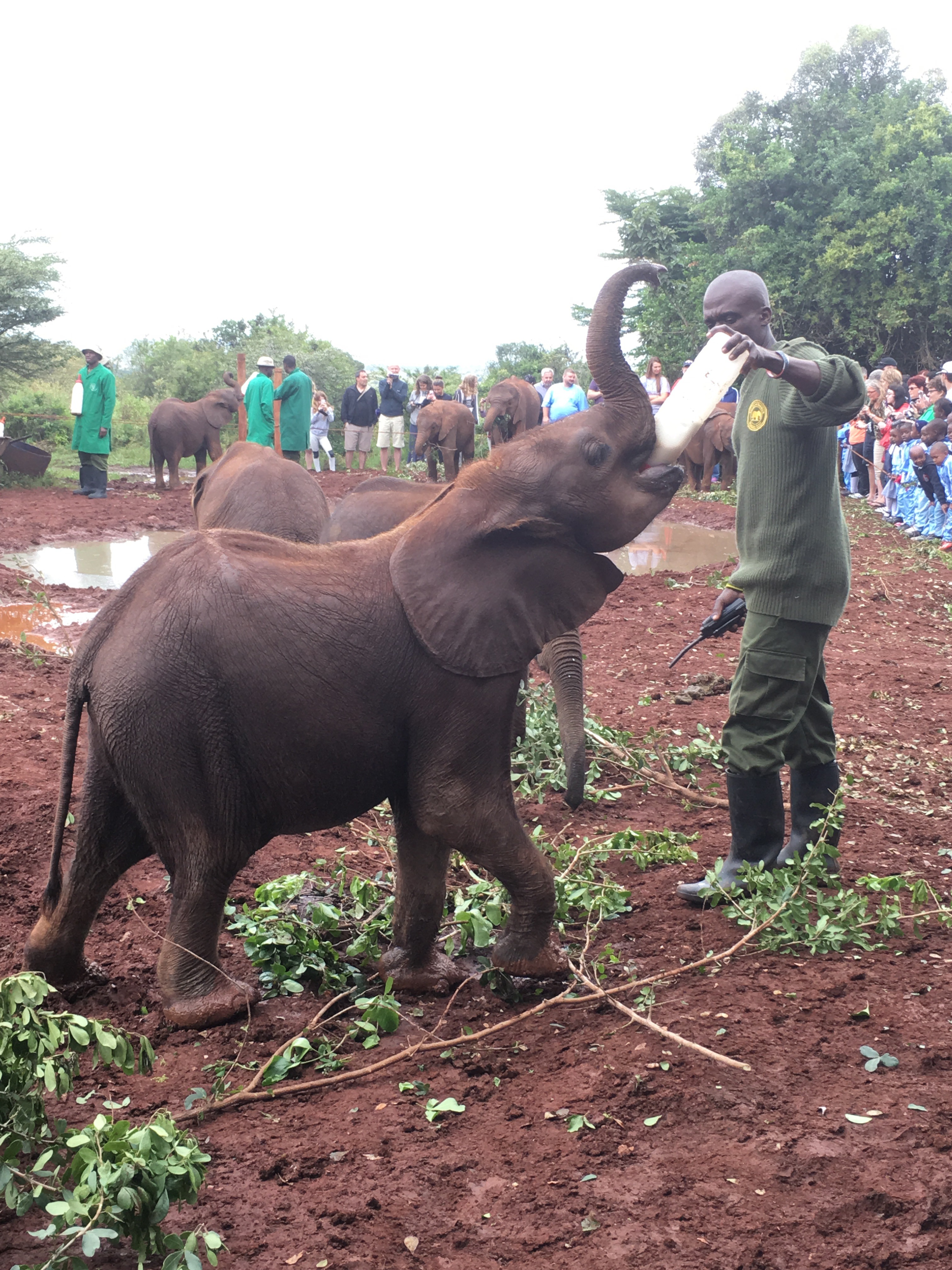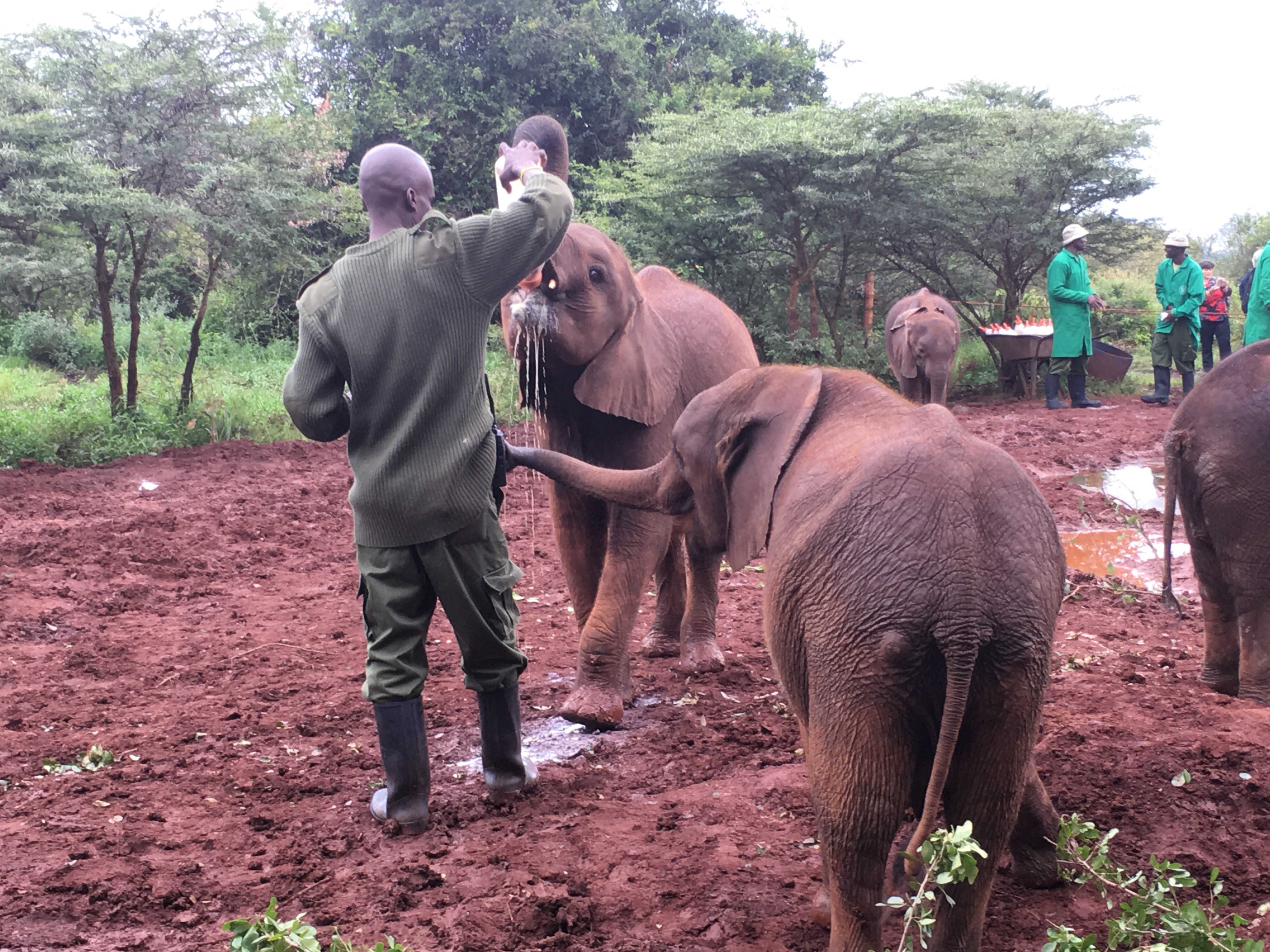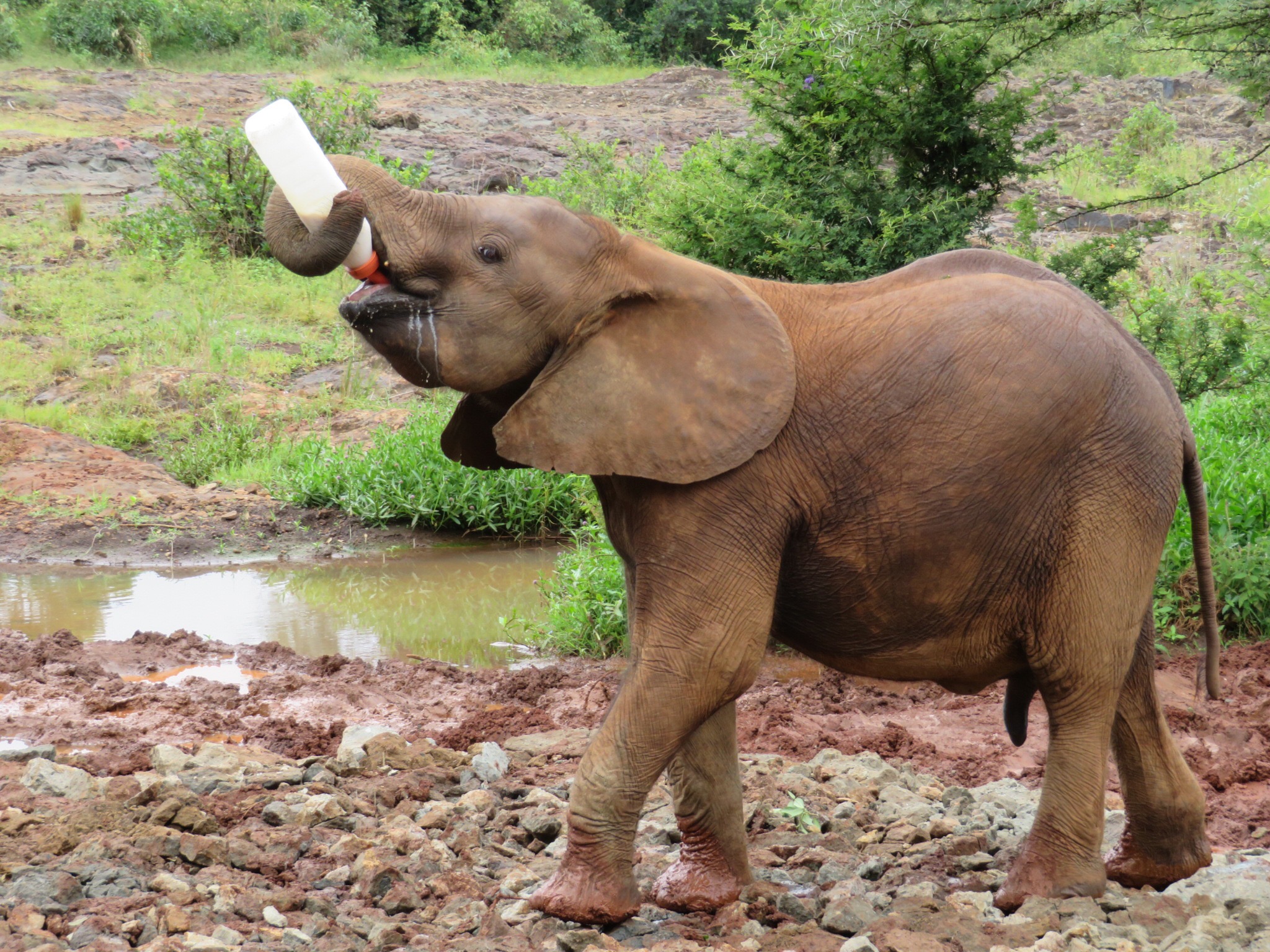We’ve been waiting with huge anticipation for our African adventure, and have a great week of activities across Kenya planned courtesy of Abercrombie & Kent. Sascha had voted the first day’s itinerary as most likely to be her trip highlight, so its fair to say expectations were high when we woke up in Nairobi this morning despite the cloudy skies.

The clock couldn’t move fast enough to 11am, when it was time to visit the baby elephants at the David Sheldrick Wildlife Trust . The orphans project rescues baby elephants whose mothers have been killed by poachers, and hand raises them before reintegrating them back into the wild. In addition to those orphaned by poachers, there are other babies who’ve been abandoned by their herds after being born premature and considered too weak to keep up, plus some today who had fallen down wells and been unable to climb out.


The biggest contributor though is poaching, which is still a significant problem despite Kenya’s strong anti-poaching stance. One of the keepers spoke passionately to the crowd of people who were gathered around the babies as they had their lunchtime bottles on the only thing that can really make a difference in stopping poaching – stopping the demand for ivory. If nobody buys ivory, there is no market for it and the poachers’ business model becomes redundant. Pretty simple really, as he said ‘ivory is for elephants not for people’.

I doubt you would have found a single person in the crowd who will ever buy an ivory product after visiting the orphanage. Hearing the keeper speak, seeing the baby elephants play with their keepers and chug down their bottles of milk (in a way that reminded me so much of an always independent baby Sam, refusing to let anyone else hold his bottle for him and flinging it over his shoulder as soon as he’d drained every drop) certainly made a lasting impact on our family.

Aside from the important environmental messages, seeing the baby elephants up close and personal was an absolute treat. The only thing separating them from us was a simple rope, and they wandered over to have their backs scratched and say hello. We were standing near a class of Kenyan school children and I thought they were going to jump out of their skins with excitement as the elephants came close enough to touch.
I’d always thought elephants would have smooth skin, but they are actually really hairy and covered in bristles. African learning number one right there, and with the first of the Big Five ticked off our list in fine style before lunch on Day One we’re off to a great start!
I just can’t understand why anyone would buy ivory products. So sad to see all these babies orphaned :'(
I know, the impact of poaching is so significant, but if the poachers didn’t have a market they wouldn’t operate. The responsibility is on everyone to stop the demand for ivory isn’t it?